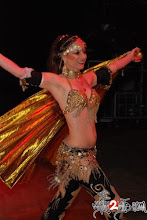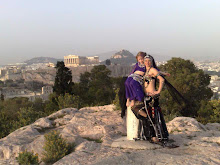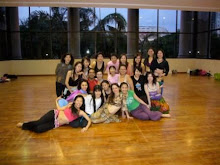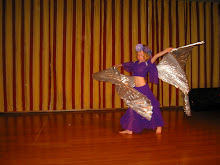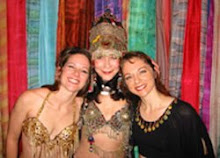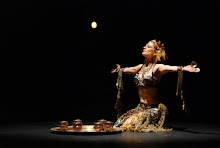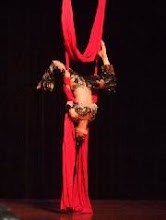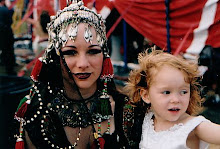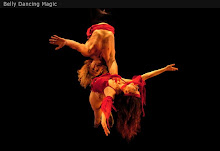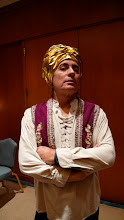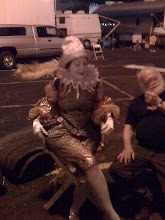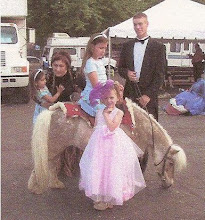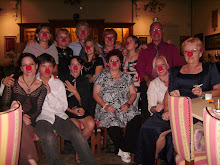At the time, I had never heard of this place called Greece, but I was intrigued to find out about the ancient ruins there that were very often dedicated to Athena, powerful goddess of war and wisdom (with her props of shield and owl), or Zeus, head honcho of Mount Olympus, (with his spectacular lightening bolt props). At the time Mom left the states, I knew a lot about belly dance props and what you were supposed to do with them but I didn’t know much about Europe or Greece or Athens – I barely knew about the rest of the U.S. for that matter – but now I was going to be with my mom in this mythological ancient city, a city that she said had called to her, and now, through her, it was calling to me as well.
BEAUTIFUL ATHENS
I mentioned a sword. Rhea’s teacher, Jamila Salimpour, had first placed that sword on Mom’s head and said “Dance”, and thanks to Jamila, Mom became one of the first American belly dancers to take sword balancing into the context of a belly dance cabaret show. (Check out the story: its in Kajira Djoumahna's Tribal Bible). The sword became Rhea’s signature prop, and she is still a master of the balanced blade.
RHEA WITH SWORD IN TROUPE BAL ANAT
In Greece, Mom would glide from gig to gig through the streets of Plaka, and when I finally arrived in Athens, I walked each night by her side. She wore a long purple velvet cape covering her glittering costume and in her hand carried a sword in its scabbard. Every night waiters in the outdoor tavernas we walked by would yell out:
“Rhea! Are you going to KEEL ME WITH YOUR KNIFE?”And other brilliant remarks in the same vein. Every. Single. Night.
http://www.gerlachstudio.com/p183.html
We would regally ignore them and keep striding, goddess-like, along, which was brilliant on our parts. I imagined that Athena was up on the Acropolis looking protectively down at us with her shield and fluttering little owl. Athena had our back should we ever actually need to 'keel' those waiters with our knife.
ATHENA WITH OWL, SHIELD AND SPEAR PROPS BY BEBESDUPOIRE
Nowadays, belly dance students sometimes rush to balance the blade before they have even learned to flow their dance without a prop, or adequately developed as artists. In their haste to show off a skill, they miss opportunities to create personal sacred balance ritual, to make magic with their prop. Some common mistakes: Dancers unceremoniously plop the sword on their head and then shimmy like speed demons. They try to make it look too easy, put their fingers all over the ‘sharp’ end of the blade and rush to show all they can do under the blade. If you’re going to put a prop on your head, take your time and treat the whole process with respect. You are enacting dance theater, an otherworldly, revelatory slow motion moment of power and drama in your dynamic dance repertoire.
SUMMONING THE SACRED ENERGY FIELD BEFORE I BALANCE MY TRAY ON MY HEAD
Be present in the moment, take the time to practice and develop a real relationship with your prop, and be clear in your mind about what that relationship is. What is your dance story? What ideas and images are you projecting with your prop? Make sure your priority is still to be a good dancer who radiates awareness and presence under the blade. Above all, don’t let dorky people take your prop from you and run around restaurants slashing the air like pirates. Woe to those who touch my props without asking. And if you do ask, I will smile, say no, and secretly skewer you in my mind. If I offer to show you, that is another story. Like the international circus performers I have worked with and still learn from, I take props very seriously: they are alive; they are my livelihood. Like Athena’s shield, they are important extensions of myself and my craft. Word to the wise: never touch anyone's prop unless they offer. It's none of your business. It's their magic.
The first time I was asked to teach a seminar on balancing, I wasn’t sure whether to do it. I asked my mom what she thought, she said no. My mom had always made a point of NOT teaching sword balancing, figuring that people should experiment on their own. Her idea was that dancers should observe the craft and technique of established, expert dancers at work with their props then work things out for themselves, hopefully adding their own original ideas to their act. You never want to ‘lift’ ideas, undigested, from other dancers – you want to create your own original concoctions. I agree with her on that count, students don’t do enough observational fieldwork anymore (though perhaps with YouTube that is changing – its just sad there aren’t as many real, non-computer venues to frequent in order to see great dancers accompanied by a live band doing a real 5-part show as there were in the 70s). But I went ahead, thought things through for myself and taught the seminar anyway. I sat down to think through our ‘family secrets’ so I could translate them to the students in some organized, meaningful way.
In the end it felt a bit unsettling to reveal our trade secrets, but it was also liberating to share, and the response I got was gratifying. Students have told me they pinned my hand-outs above their mirrors for inspiration, and incorporated balancing work into their lives on a daily basis. They were being given permission to take risks, try things and be creative. With a sword on their head.
MELINA WITH SWORD








